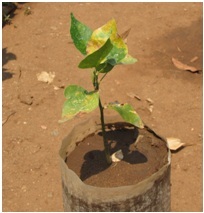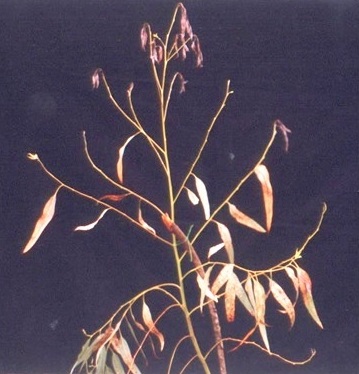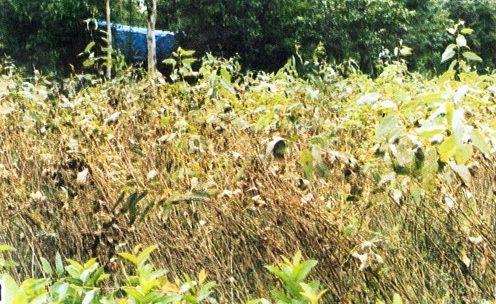This is a disease in nurseries, vegetative multiplication areas and young plantations of many important forestry species viz., Acacia, Albizia, Bamboos, Dalbergia, Eucalyptus, Gmelina, Melia, Neem, Cadamba, Sandal, Teak, etc.
Many forestry species such as Acacia, Albizia, Bamboos, Casuarina, Dalbergia,
Eucalyptus, Gmelina, Melia, Neem, Cadamba, Pterocarpus, Sandal, Swietenia,
Teak, etc
Different fungi like Alternaria, Cercospora, Colletotrichum, Curvularia, Cylindrocladium, Fusarium, Macrophomina, Phoma, Phomopsis, Pestalotiopsis, Phyllachora, Phyllosticta Pseudocercospora, etc. and bacteria viz., Xanthomonas and Pseudomonas are the causal organisms reported on many forestry crops.
1. The infected seedlings present a high blighted appearance of leaves and shoot and severely infected seedlings show premature defoliation.
2. The disease spreads rapidly after initial appearance in patches, causing large scale mortality of nursery stock.
3. Infected plants exhibit blighting of shoots and leaves and subsequent colonization by pathogens fasten blighting.
4. The infected seedlings dry up and are eventually shed
The disease can be managed by:
a) cultural practices aimed at favoring plant growth and discouraging the growth of plant pathogen
b) Severely infected plants need to be kept in isolation in order to prevent the spread of the disease to other healthy plants
c) use of any one of fungicides like Bavistin, Blitox, Captof, Dithane M-45, Mancozeb at fortnightly intervals.
Seedling blight disease symptoms of Pongamia pinnata

Seedling blight disease on Eucalyptus spp.

Seedling blight disease on Eucalyptus spp.




